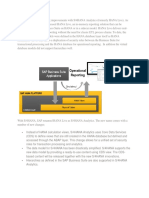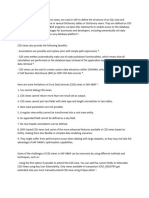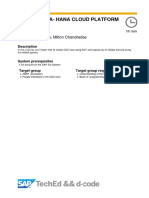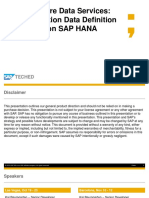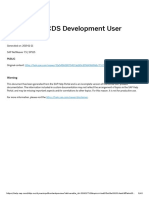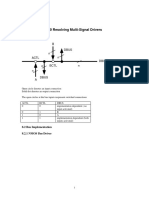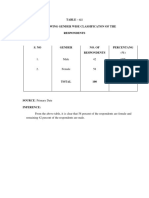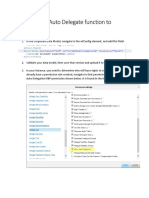0% found this document useful (0 votes)
29 views12 pagesWhat Is A CDS View?: 1. Advanced Data Modelling Features
CDS (Core Data Services) Views are advanced database views designed for SAP HANA and S/4HANA, allowing developers to create semantically rich data models that enhance performance through code pushdown. They offer features such as lazy-load associations, dynamic input parameters, and support for annotations, making them superior to traditional ABAP views. CDS Views facilitate better data processing, integration with UI frameworks, and improved analytics capabilities.
Uploaded by
Ritam AdhyaCopyright
© © All Rights Reserved
We take content rights seriously. If you suspect this is your content, claim it here.
Available Formats
Download as DOCX, PDF, TXT or read online on Scribd
0% found this document useful (0 votes)
29 views12 pagesWhat Is A CDS View?: 1. Advanced Data Modelling Features
CDS (Core Data Services) Views are advanced database views designed for SAP HANA and S/4HANA, allowing developers to create semantically rich data models that enhance performance through code pushdown. They offer features such as lazy-load associations, dynamic input parameters, and support for annotations, making them superior to traditional ABAP views. CDS Views facilitate better data processing, integration with UI frameworks, and improved analytics capabilities.
Uploaded by
Ritam AdhyaCopyright
© © All Rights Reserved
We take content rights seriously. If you suspect this is your content, claim it here.
Available Formats
Download as DOCX, PDF, TXT or read online on Scribd
/ 12



























